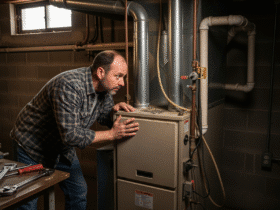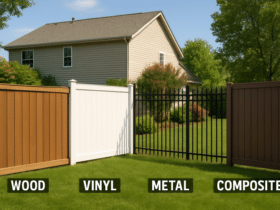Key Takeaways
- Understand the purpose and importance of building envelope inspections.
- Learn about common issues detected during inspections.
- Discover steps homeowners can take to maintain their property effectively.
- Gain insights from authoritative sources on home maintenance and inspection trends.
Introduction to Building Envelope Inspection
For homeowners, maintaining the integrity of their property extends beyond mere aesthetics and comfort. Ensuring your home is structurally sound begins with regular building envelope inspections, a crucial process often overlooked. These inspections can detect early signs of deterioration, allowing homeowners to address issues before they become costly repairs or a safety risk. By engaging comprehensive building envelope inspection services from certified professionals, homeowners can proactively preserve the longevity of their homes and ensure peace of mind for the future.
A building envelope, consisting of walls, roofs, doors, and windows, acts as the first line of defense against external elements. This ensemble of structural components helps regulate indoor climate, protects from moisture penetration, and maintains structural integrity. Regular building envelope inspections are crucial because undetected weaknesses can gradually lead to significant structural failures. Experts say addressing these vulnerabilities early can prevent bigger issues, save costs, and reduce energy consumption by ensuring the home is properly insulated and sealed.
Understanding Common Issues Detected
Water Leakage and Moisture Intrusion
Water intrusion can lead to extensive damage over time, primarily by fostering mold growth and compromising the integrity of key structural components of a building. This phenomenon is often triggered by various factors, including inadequate sealing around windows and doors, poorly designed or malfunctioning drainage systems, and damaged or missing roof shingles. Regular inspections are critical because they help detect and resolve risks before they become big concerns.
Homeowners can proactively prevent moisture intrusion by regularly cleaning gutters to ensure unobstructed water flow, repairing roof leaks to minimize water entry, and implementing proper landscaping techniques. Grading the terrain to move water away from the foundation and adding drainage systems, such as French drains, can considerably improve a home’s resistance to water infiltration. Additionally, using water-resistant materials in construction and maintenance can safeguard against moisture-related damage. By being vigilant and proactive, homeowners can preserve their property’s longevity and protect their health from the adverse effects of mold and structural deterioration.
Thermal Insulation Deficiencies
Insulation is critical for creating a pleasant interior atmosphere and increasing energy efficiency. It is a thermal barrier, keeping homes warm in winter and cool in summer. Common insulation difficulties include insufficient or inferior insulating materials, gaps, and deterioration caused by wear and tear or dampness. These flaws can dramatically reduce the performance of heating and cooling systems, requiring them to work harder and resulting in greater energy consumption and higher utility costs.
For example, inadequately insulated attics and walls can result in substantial heat loss during the colder months, and inadequate insulation in the summer might enable unwanted heat to enter, straining air conditioning systems. Regular inspections are essential in identifying these problems early on. Utilizing advanced thermal imaging tools during inspections can effectively pinpoint areas where insulation improvements are necessary. These tools highlight temperature variations across surfaces, revealing hidden gaps or improperly installed insulation that may not be visible to the naked eye. By addressing insulation issues proactively, homeowners can ensure a consistently comfortable indoor environment while optimizing energy efficiency throughout the year, ultimately contributing to lower energy costs and a reduced carbon footprint.
Cracks and Deteriorations
Cracks in walls, foundations, or other exterior components pose aesthetic concerns and potential indications of serious structural issues within a home. While small hairline cracks might initially appear inconsequential, they can expand over time due to settling, temperature fluctuations, or moisture changes, leading to significant problems like water intrusion and pest infestations. For instance, water penetrating these cracks can result in mold growth, damage to insulation, and deterioration of wooden structures. At the same time, pests such as termites may find easy access through these openings. Regular inspections by qualified professionals are essential in identifying these early signs of deterioration, allowing homeowners to address issues promptly. Timely repairs can preserve the home’s structural integrity and save homeowners from incurring costly restorative work in the future. Furthermore, addressing these issues early can enhance energy efficiency and overall property value, making inspections a crucial part of home maintenance.
The Inspection Process: What to Expect
The inspection process is critical to ensuring a building’s integrity and safety. It typically begins with a thorough visual assessment of the building’s exterior structure and enclosure systems, which include walls, windows, doors, and roofs. Inspectors utilize modern techniques like thermal imaging, which employs infrared technology to discover concealed leaks and insulation gaps that aren’t visible to the human eye. This method is particularly effective for identifying areas of heat loss or moisture intrusion, which, if left unaddressed, can lead to significant energy inefficiencies and structural damage.
In addition to thermal imaging, drone technology has revolutionized the inspection process by providing high-resolution aerial views of hard-to-reach areas, such as rooftops and tall façades. This technology allows inspectors to gather comprehensive data without the risks associated with traditional ladder or scaffolding methods.
During the examination, qualified personnel thoroughly evaluate the structure for indicators of deterioration such as fractures, corrosion, or mold. They also assess material degradation and identify potential construction errors that could compromise the building’s safety and longevity. Following the evaluation, inspectors compile a detailed report that outlines their findings, including photographs and descriptions of any issues observed, as well as tailored recommendations for repairs or maintenance. This robust documentation helps property owners make informed decisions and is essential information for future inspections and potential real estate transactions.
Homeowner’s Role in Building Maintenance
Homeowners may help keep their property in good condition by doing frequent self-inspections and taking proactive actions.. Routine tasks such as unclogging gutters, resealing windows, and ensuring proper attic ventilation can prevent common issues like water damage, mold growth, and energy inefficiency. Additionally, homeowners should consider creating a seasonal maintenance checklist to stay organized and focused on critical areas.
Selecting a qualified inspector for professional inspections is vital. Homeowners should prioritize professionals with credible certifications, such as those from recognized industry organizations, and robust, positive client reviews. It’s beneficial to ask for references and inquire about the inspector’s experience specific to the type of property owned.
Timely attention to these maintenance needs not only prolongs the life of the building envelope but also enhances overall safety, comfort, and energy efficiency within the home. Moreover, regular upkeep can increase the property’s market value and prevent costly repairs in the future, ultimately safeguarding the homeowner’s investment for years to come. Participating in local community resources or seminars may also give useful information and techniques for good housekeeping.
Navigating Home Improvement News and Guidance
Homeowners who want to handle repairs and improvements properly must stay current on the current trends in house maintenance. Authoritative resources, such as comprehensive guidelines on home improvement, provide extensive advice that is practical and easy to follow. These guidelines often cover various topics, from energy-efficient upgrades to seasonal maintenance checklists. Different industries—including plumbing, electrical, and HVAC—offer expert recommendations that promote innovative techniques and materials for maintaining and enhancing home environments. For instance, using smart technology for home monitoring or adopting eco-friendly materials can greatly improve efficiency and sustainability. Moreover, staying updated on local building codes and regulations is vital for compliance and safety. These insights empower homeowners to make informed decisions that enhance their living spaces’ overall safety, efficiency, and value, ultimately leading to a more comfortable and secure home.
Benefits of Regular Inspections
Routine building envelope inspections offer several critical advantages for property owners and managers. These inspections, which detect and solve faults early on, can greatly minimize future repair costs. A well-maintained building exterior improves energy efficiency, resulting in lower power bills and a more pleasant inside atmosphere. Regular inspections help ensure that minor faults, such as cracks or water leaks, do not develop into major problems that could compromise the structure’s integrity. Furthermore, maintaining the building envelope fosters a secure and healthy living space for inhabitants and aids in preserving the property’s overall value. Property owners can safeguard their investments by prioritizing these inspections while promoting sustainability and occupant well-being.
Conclusion
Building envelope inspections play a crucial role in homeownership, as they focus on the exterior components of a building, including walls, roofs, and foundations. These inspections help identify moisture intrusion, air leaks, and thermal performance, which can severely impact the property’s structural integrity and energy efficiency. By proactively addressing inspection findings, homeowners can prevent costly repairs and damage due to water, mold, or pests. Furthermore, maintaining the building envelope contributes to a healthier indoor environment by enhancing airflow and reducing allergens. Professional inspection services provide expertise and a thorough assessment, and offer peace of mind and potential long-term savings on energy bills. Overall, investing in regular building envelope inspections is a wise decision for maintaining the value and comfort of one’s home.








